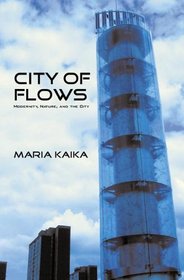Maria Kaika, City of Flows: Modernity, Nature, and the City, Routledge, New York, 2005
Typically, cities and nature are perceived as geographic opposites, cities being manufactured social creations, and nature being outside of human construction. Through a historical geography of water in the modern city, Kaika shows that this is not the case. Rather, nature and the modern city are fully intertwined, with cities integrating nature at every level of activity.
While the author’s empirical focus is on Athens, she discusses other major western metropolises including London and New York. Kaika reveals how natural elements permeate modern urban social life. She traces the mostly hidden infrastructures of water (pipes, taps, underground pumps, aqueducts). By doing so, she reveals the confluence between the material, social and historical flows that urbanize nature — that the city is an intricate network of natural elements and biological flows, of social power relations and capital investment cycles, which, in fact, not only did not separate nature from the city, but have instead woven them together into an even more messy socio-spatial continuum.
